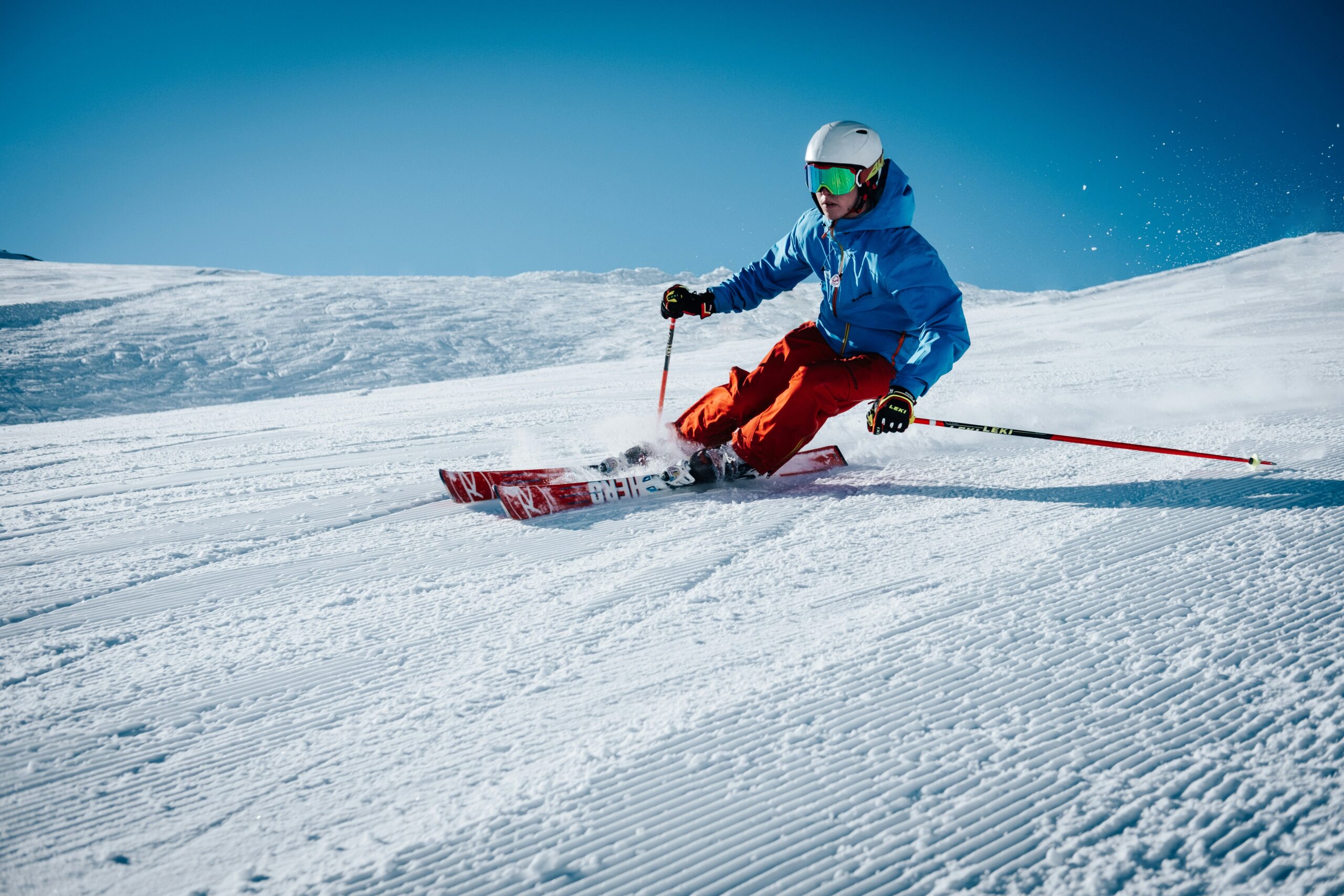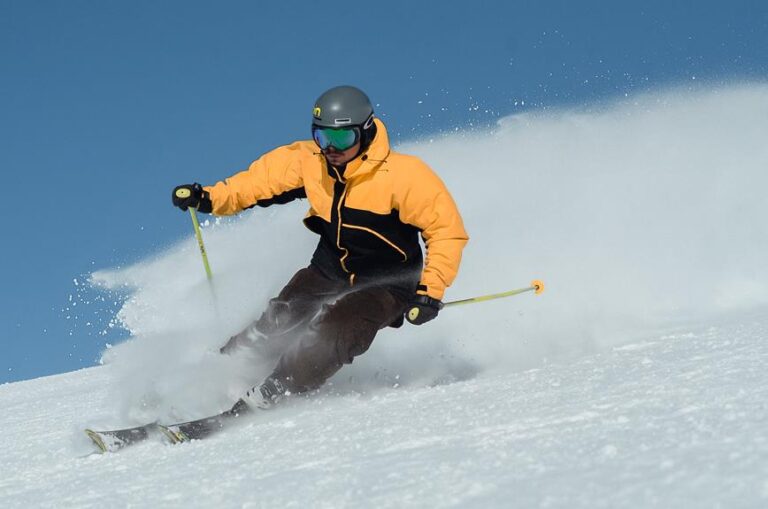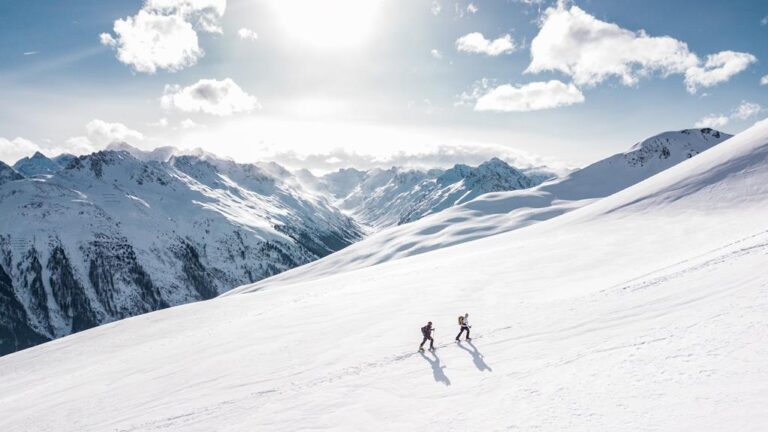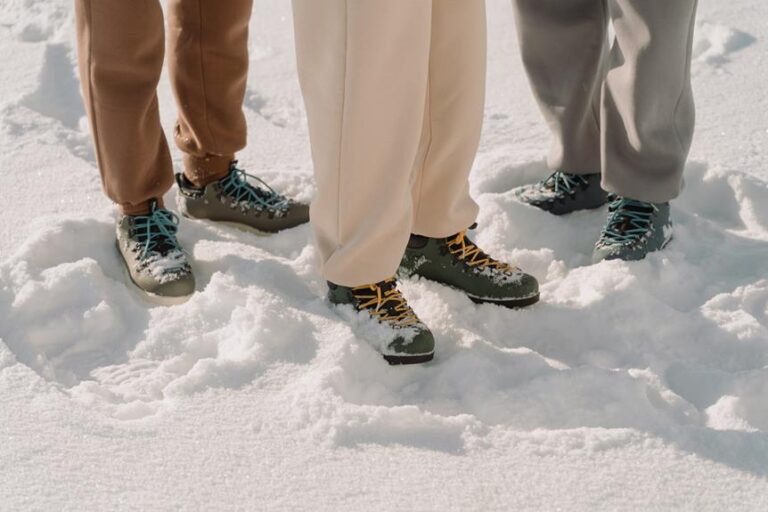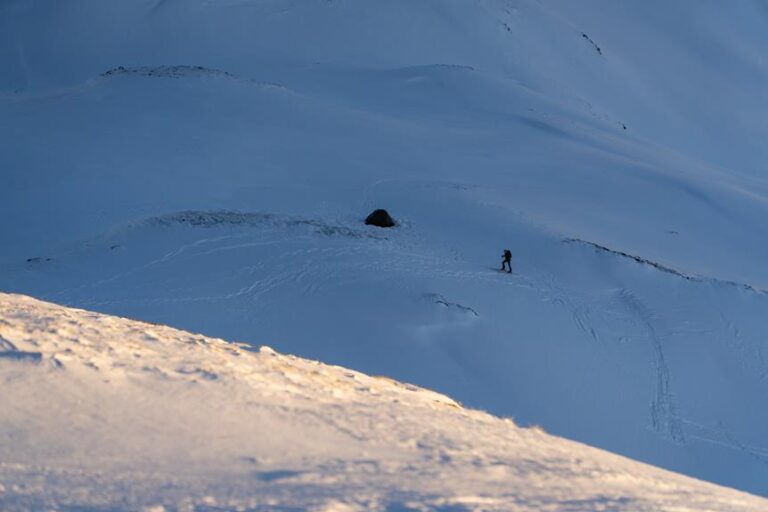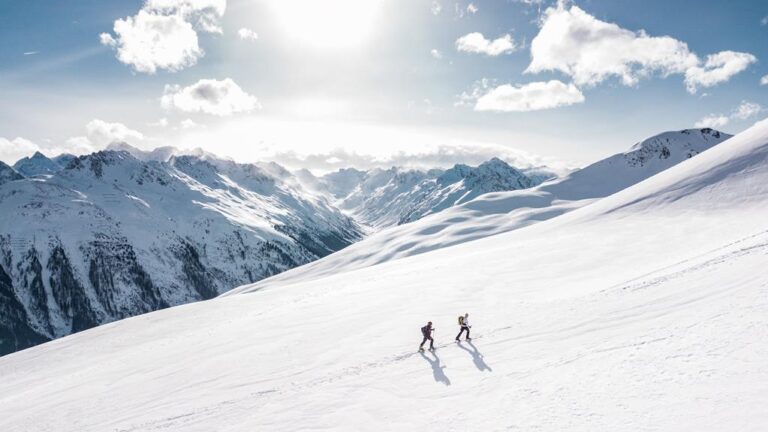Skiing in 40 Degree Weather – Top Secrets Revealed
When it comes to skiing in 40-degree weather, you might be facing a few unique obstacles.
Sure, the warmer temperatures can provide a pleasant change from the usual freezing cold, but it also means the snow conditions can be quite different.
You see, the higher temperatures can cause the snow to melt, exposing rocks and making off-piste skiing quite challenging.
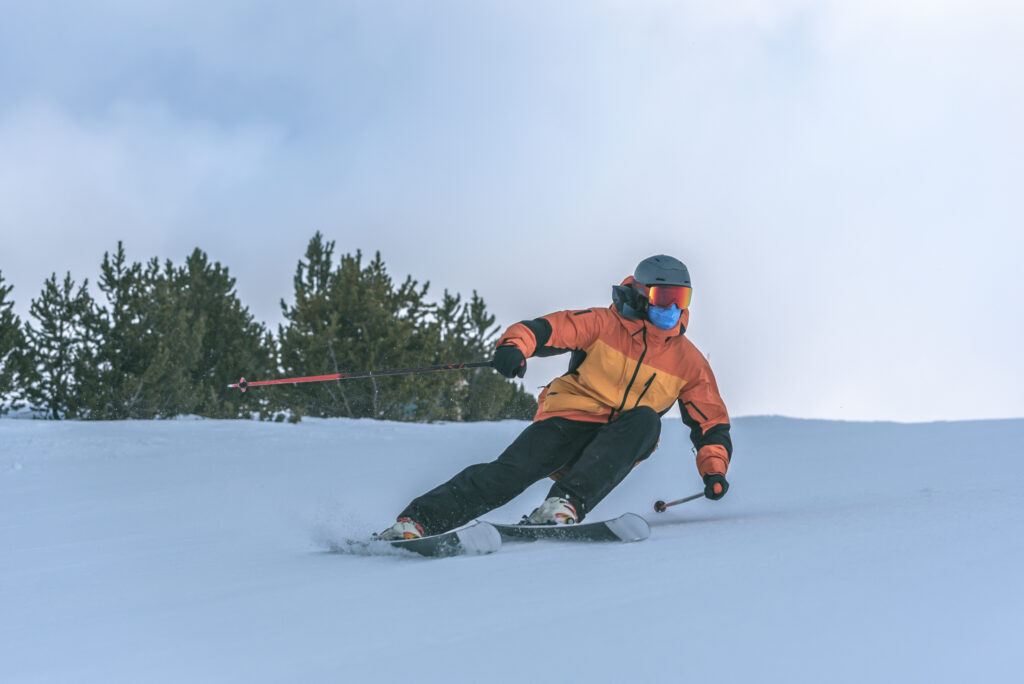
But don’t worry, there are ways to navigate these conditions and still have an enjoyable time on the slopes.
So, grab your gear and let’s explore how you can make the most of skiing in 40-degree weather.
Ideal Weather Conditions for Skiing
The ideal weather conditions for skiing typically include temperatures between -6 to -1 degrees Celsius, providing optimal snow conditions and ensuring a great skiing experience.
The temperature plays a crucial role in determining the quality of the snow on the slopes. When the temperature is within this range, the snow is at its best, neither too icy nor too slushy. This allows skiers to glide smoothly and make precise turns.
Weather also plays a significant role in creating the ideal conditions for skiing. Bluebird days with clear blue skies and warm sun are common in 40-degree weather. This not only enhances the overall skiing experience but also provides an enjoyable environment to be in.
The warm weather allows skiers to feel comfortable and enjoy the slopes without feeling too cold.
When skiing in warmer temperatures, it’s essential to dress appropriately. Layering your clothing is key to staying comfortable throughout the day. Start with a moisture-wicking base layer, add an insulating mid-layer, and top it off with a waterproof and breathable outer layer.
This way, you can easily adjust your clothing based on the weather conditions and your activity level.
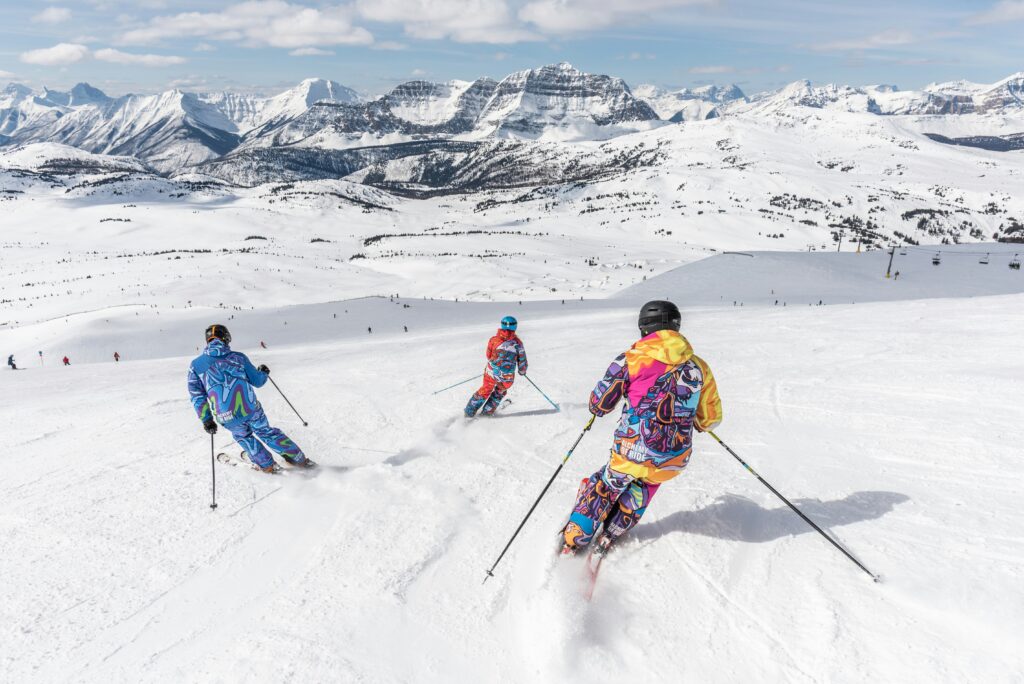
Tips for Skiing in 40 Degree Weather
When skiing in 40-degree weather, there are several important tips to keep in mind to ensure a safe and enjoyable experience on the slopes.
Snow Conditions
Firstly, be prepared for variable snow conditions, as the warmer temperature can cause the snow to become slushy. This type of snow can make skiing heavier and grabby, so it’s important to adjust your technique accordingly. Watch out for exposed rocks and melting snow, especially if you venture off-piste, as these hazards can be more prevalent in warmer weather.
Layering
In terms of clothing, dress in thinner, quicker drying layers to stay comfortable throughout the day. Opt for waterproof gear, such as a jacket and pants, to protect yourself from the wet snow. It’s also a good idea to wear ski pants with ventilation options, as they can help regulate your body temperature on a warm day.
Skiing on Cold Days
Keep in mind that skiing in 40-degree weather is at the upper end of the ideal temperature range for good skiing conditions. While it can still be enjoyable, be prepared for the snow to be softer and slower than on colder days. Adjust your expectations and enjoy the unique challenges and rewards that skiing in warmer weather brings.
Ski Festivals
Lastly, consider taking advantage of springtime ski festivals and cheaper skiing options with Spring passes. These can offer great opportunities to enjoy winter sports in a more relaxed and festive atmosphere.
Choosing the Right Clothing for Warm Skiing
To ensure comfort and performance while skiing in warm weather, it’s crucial to choose the right clothing. Here are some tips to help you dress appropriately for your skiing adventure:
- Opt for thinner, quick-drying layers instead of cotton for sweat-wicking and comfort in 40-degree weather. This will keep you dry and prevent discomfort caused by sweat buildup.
- Choose waterproof clothing, especially with a chance of rain, to stay dry and warm while skiing. It’s important to keep your body protected from moisture to avoid getting chilled.
- Always wear a helmet for safety and better overall performance when skiing in warm weather. Protecting your head is essential, no matter the temperature or type of skiing you enjoy.
- Consider wearing sunglasses or goggles with high-quality lenses and applying sunscreen to protect against sun and glare. The bright sun reflecting off the snow can be harmful to your eyes and skin.
- Avoid wearing t-shirts and opt for lightweight, insulated jackets to prevent snow burn and maintain warmth during warm skiing conditions. This will provide you with the right amount of insulation without overheating.
Exploring Springtime Ski Festivals
Springtime ski festivals offer a unique and festive opportunity to combine skiing with music, dancing, and other exciting activities. These festivals, held in various ski resorts around the world, bring together the best of both worlds – a love for skiing and a passion for celebration.
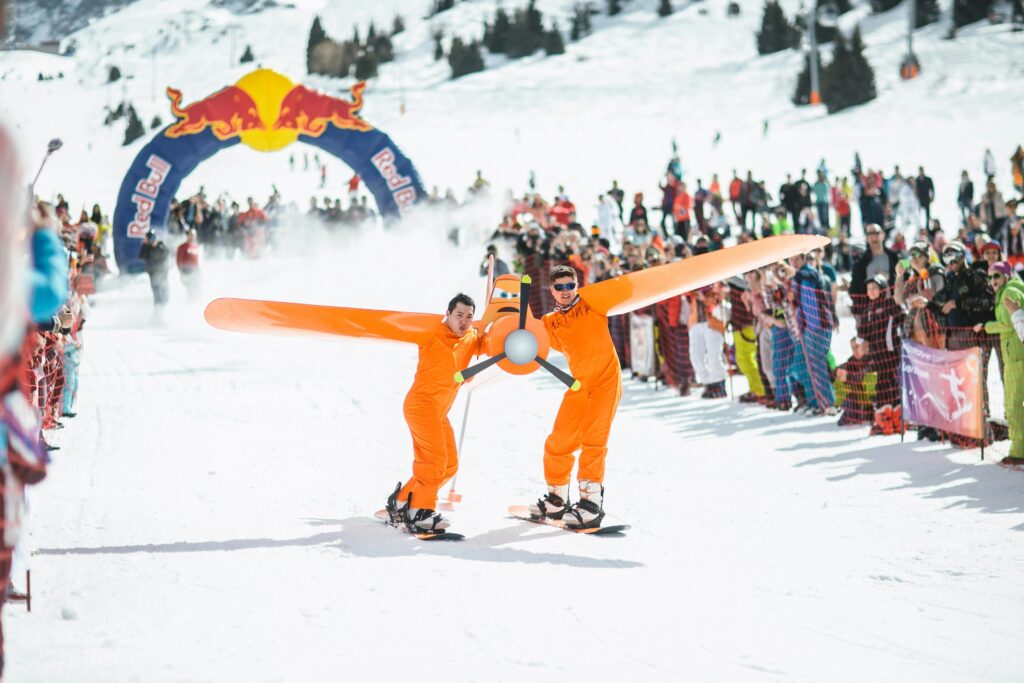
From Mayrhofen, Austria, to Avoriaz, France, and Jackson Hole, USA, there are plenty of notable festivals to choose from.
To give you a clearer picture, here are some examples of popular springtime ski festivals:
| Festival Name | Location | Features |
|---|---|---|
| Snowbombing | Mayrhofen, Austria | Fusion of music and skiing, pond skimming |
| Snowboxx | Avoriaz, France | Skiing, live music, après-ski parties |
| Rendezvous Fest | Jackson Hole, USA | Skiing, live concerts, outdoor activities |
These festivals not only offer a larger range of activities beyond skiing but also provide a unique experience of skiing in slushy conditions. With the warmer 40-degree weather, you can enjoy the thrill of skiing on softer snow while immersing yourself in the lively atmosphere of the festival.
After a day on the slopes, you can relax and unwind at the local après-ski spots, where you can enjoy a drink, mingle with fellow skiers, and dance to live music.
Enjoying Affordable Skiing in Warmer Temperatures
As you delve into the world of springtime ski festivals and explore the thrill of skiing in slushy conditions, you’ll also discover the incredible opportunities for enjoying affordable skiing in warmer temperatures.
Here are some key points to consider:
- Take advantage of spring passes: Many resorts offer discounted passes during the warmer months, allowing you to enjoy the slopes without breaking the bank.
- Look for deals on equipment rentals: With the ski season winding down, rental shops often have discounted rates, making it more affordable to gear up for your adventure.
- Consider skiing on the East Coast: While the West Coast may be known for its powder, the East Coast offers more affordable options with its smaller, budget-friendly resorts.
- Take a lesson: Improving your technique can help you navigate the challenging conditions of warmer temperatures. Consider investing in a lesson to make the most of your skiing experience.
- Be mindful of the snow conditions: Warmer temperatures can lead to slushy and grabby snow. Avoid overpressuring your skis and adjust your technique accordingly to maintain control.
Frequently Asked Questions
How Cold Is Too Cold for Skiing?
When it comes to skiing, extreme cold temperatures can be too cold. It can impact your equipment and pose challenges. However, with the right gear and technique adjustments, you can still enjoy the benefits of skiing in colder temperatures.
What Is the Perfect Temperature for Skiing?
The perfect temperature for skiing varies depending on personal preference. However, generally, skiing in extreme cold can be challenging, while finding ideal ski conditions involves considering temperature, adjusting techniques, and ensuring proper equipment.
Can You Ski Above Freezing?
Yes, you can ski above freezing. When skiing in warm weather or spring conditions, expect slushy and wet snow. Adapt your skiing techniques to navigate through the soft snow and be prepared for grabby conditions.
What Do You Wear to Snowboard in 40 Degree Weather?
In 40-degree weather, layer up with moisture-wicking materials for comfort. Choose the right outerwear, like uninsulated ski pants and thin polartech layers. Adjust your equipment and bring extra layers for changing conditions. Stay hydrated!
Conclusion
In conclusion, skiing in 40-degree weather can present some challenges with melting snow and variable conditions. However, with the right preparation and technique, it can still be an enjoyable experience.
Dressing appropriately and using proper gear, such as sunscreen and high-quality lenses, is important for staying comfortable and protected. So, embrace the warmer temperatures and make the most of your skiing adventure in the springtime!
